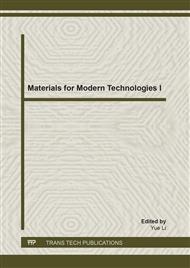p.57
p.61
p.69
p.75
p.81
p.87
p.95
p.101
p.107
CFD Simulation of Enhanced Oil Recovery Using Nanosilica/Supercritical CO2
Abstract:
In this study series of runs were done by a CFD technique in which the injected fluid is nanoparticles/supercritical CO2. Geometry of the porous medium was created with the commercial grid generation tool (Gambit software). Continuity, momentum and volume fraction equations were solved based on the finite volume method. The benefits of existing nanoparticles in the gas injection process have been investigated. The numerical results show that addition of nanosilica into the supercritical CO2 improves the oil recovery. It was also found that by increasing the nanoparticles concentration from 1 Vol. % to 2 Vol. %, the oil recovery factor increases about 5%. In addition, obtained results confirmed that by injecting the nanofluid fingers are reduced. The displacing fluid containing nanoparticles is more efficient than the supercritical CO2 in sweeping the in-situ oil.
Info:
Periodical:
Pages:
81-86
Citation:
Online since:
May 2015
Authors:
Keywords:
Price:
Сopyright:
© 2015 Trans Tech Publications Ltd. All Rights Reserved
Share:
Citation:


